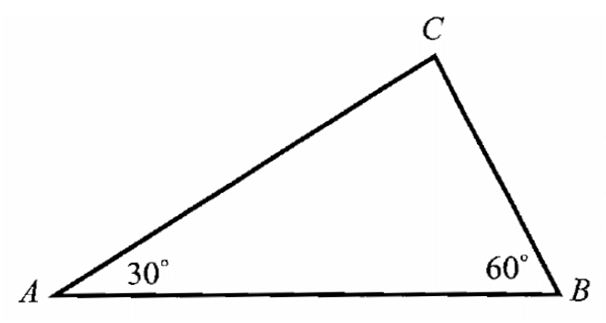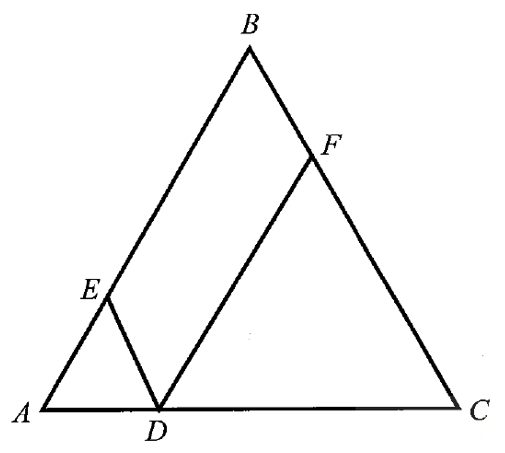VERIFYING THE RELATION BETWEEN ZEROES AND COEFFICIENTS
The basic relationship between zeroes and coefficient of quadratic equation ax2 + bx+ c = 0 are
Sum of zeroes = α + β = -b/a
Product of zeroes = α β = c/a
Here α and β are zeroes of the quadratic polynomial. a, b and c are the coefficients of x2, x and constant terms respectively.
Question :
Find the zeroes of the following quadratic polynomial and verify the relationship between the zeroes and coefficients
(i) x² – 2 x – 8
Solution :
First, let us find the zeroes of the polynomial.
x² – 2 x – 8 = 0
(x – 4) ( x + 2) = 0
|
x - 4 = 0 x = 4 |
x + 2 = 0 x = -2 |
So, α = 4 and β = -2
Now we are going to verify the relationship between these zeroes and coefficients
x² – 2 x – 8 = 0
ax² + b x + c = 0
a = 1 b = -2 c = -8
Sum of zeroes α + β = -b/a
4 + (-2) = -(-2)/1
2 = 2
Product of zeroes α β = c/a
4(-2) = -8/1
-8 = -8
(ii) 4 s² – 4 s + 1
Solution :
First, let us find the zeroes of the quadratic polynomial.
4 s² – 4 s + 1
(2 s – 1) ( 2 s - 1) = 0
2 s – 1 = 0
2 s = 1
s = 1/2, s = 1/2
So, α = 1/2 and β = 1/2
Now we are going to verify the relationship between these zeroes and coefficients
4 s² – 4 s + 1 = 0
ax² + b x + c = 0
a = 4 b = -4 c = 1
Sum of zeroes α + β = -b/a
(1/2) + (1/2) = -(-4)/4
2/2 = 1
1 = 1
Product of zeroes α β = c/a
(1/2)(1/2) = 1/4
1/4 = 1/4
(iii) 6 x² – 3 – 7 x
Solution :
First, let us find the zeroes of the quadratic polynomial.
6 x² – 3 – 7 x = 0
6 x² - 7 x – 3 = 0
|
3x + 1 = 0 3x = -1 x = -1/3 |
2x - 3 = 0 2x = 3 x = 3/2 |
So, α = -1/3 and β = 3/2
Now we are going to verify the relationship between these zeroes and coefficients
6 x² - 7 x – 3 = 0
ax² + b x + c = 0
a = 6 b = -7 c = -3
Sum of zeroes α + β = -b/a
(-1/3) + (3/2) = -(-7)/6
(- 2 + 9)/6 = 7/6
7/6 = 7/6
Product of zeroes α β = c/a
(-1/3)(3/2) = -3/6
-1/2 = -1/2
(iv) 4 u² + 8 u
Solution :
Find let us find the zeroes of the quadratic polynomial.
4 u² + 8 u = 0
4 u (u + 2) = 0
4 u = 0 u + 2 = 0
u = 0 u = -2
So, α = 0 and β = -2
Now we are going to verify the relationship between these zeroes and coefficients
4 u² + 8 u = 0
ax² + b x + c = 0
a = 4 b = 8 c = 0
Sum of zeroes α + β = -b/a
0 + (-2) = -8/4
- 2 = -2
Product of zeroes α β = c/a
(0)(-2) = 0/4
0 = 0
(v) t² - 15
Solution :
Find let us find the zeroes of the quadratic polynomial.
t2 - 15 = 0
t2 = 15
t = √15
t = ± √15
t = √15 t = - √15
So the values of α = √15 and β = -√15
Now we are going to verify the relationship between these zeroes and coefficients
t² - 15 = 0
ax² + b x + c = 0
a = 1 b = 0 c = -15
Sum of zeroes α + β = -b/a
√15 + (-√15) = -0/1
0 = 0
Product of zeroes α β = c/a
(√15)( -√15) = -15/1
-15 = -15
(vi) 3 x² – x - 4
Solution :
Find let us find the zeroes of the quadratic polynomial.
3 x² – x - 4 = 0
(3 x - 4) (x + 1) = 0
(3 x - 4) = 0 (x + 1) = 0
3 x = 4 x = -1
x = 4/3
x = 4/3 x = -1
So the values of α = 4/3 and β = -1
Now we are going to verify the relationship between these zeroes and coefficients
3 x² – x - 4 = 0
ax² + b x + c = 0
a = 3 b = -1 c = -4
Sum of zeroes α + β = -b/a
(4/3) + (-1) = -(-1)/3
(4-3)/3 = 1/3
1/3 = 1/3
Product of zeroes α β = c/a
(4/3)( -1) = -4/3
-4/3 = -4/3
Kindly mail your feedback to v4formath@gmail.com
We always appreciate your feedback.
©All rights reserved. onlinemath4all.com
Recent Articles
-
Derivative of Absolute Value of x Using Limit Definition
Apr 23, 25 11:11 AM
Derivative of Absolute Value of x Using Limit Definition -
Digital SAT Math Problems and Solutions (Part - 149)
Apr 23, 25 02:33 AM
Digital SAT Math Problems and Solutions (Part - 149) -
Digital SAT Math Problems and Solutions (Part - 148)
Apr 22, 25 08:20 AM
Digital SAT Math Problems and Solutions (Part - 148)

